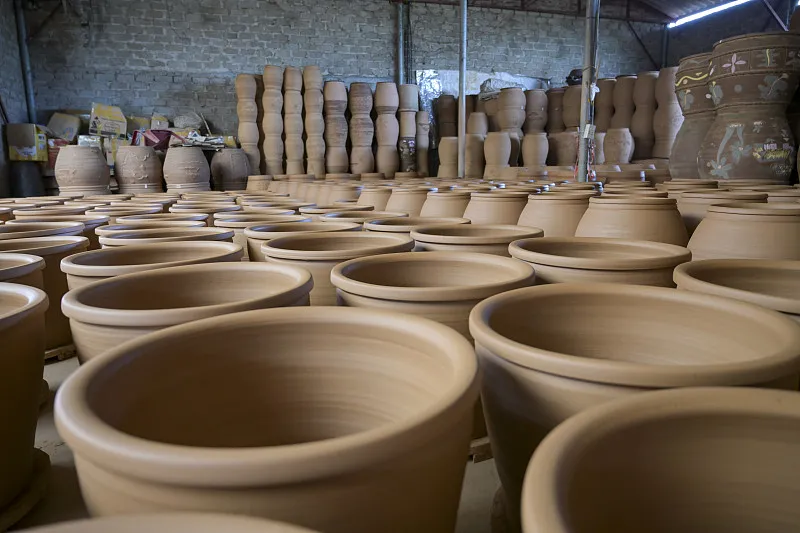Outdoor clay flower pots are exposed to wind, sun, rain, and frost for a long time. In order to maintain their beauty and durability, it is necessary to master scientific maintenance methods. Our maintenance recommendations are as follows:
● Daily cleaning and stain treatment
The surface of clay flower pots has abundant pores, which are prone to absorbing dust, water stains, and dirt. You can use a soft cloth or sponge dipped in clean water to wipe the surface and remove dust in daily life; If stubborn stains such as moss and scale appear, a diluted white vinegar solution (vinegar and water mixed in a ratio of 1:● can be prepared and gently brushed with a soft bristled brush to remove the stains without damaging the surface of the flowerpot. After cleaning, the flowerpot should be placed in a well ventilated area to dry to avoid residual moisture and the growth of mold
● Reasonable watering and water management
The high permeability and water absorption of clay can accelerate water evaporation, so the watering frequency needs to be flexibly adjusted according to the season and weather. During high temperatures in summer, water evaporates quickly and requires watering once a day in the morning and once in the evening; During spring and autumn, watering can be done every 2-3 days; Plants grow slowly in winter, so watering once every 5-7 days is sufficient. Watering should be done thoroughly until water seeps out from the bottom of the pot, but avoid long-term accumulation of water in the pot to prevent root rot and reduce the risk of cracking due to prolonged soaking
● Extreme weather protection measures
1. High temperature exposure protection
The scorching summer sun can cause the temperature of clay pots to rise sharply and lead to cracking after prolonged exposure. The flowerpot can be moved to a place with shading facilities, such as under the shade of trees or inside a sunshade; You can also wrap a layer of sunscreen and insulation film on the surface of the flowerpot, or cover it with a light colored cotton cloth to reduce the surface temperature of the flowerpot
2. Low temperature antifreeze treatment
In winter, the temperature is relatively low, and clay pots are prone to cracking due to frost heave. Before the temperature drops to 0 ℃, the flowerpot needs to be treated with antifreeze. Can wrap straw, old clothes, insulation cotton and other insulation materials outside the flowerpot; Or bury the flowerpot underground, exposing only the opening of the pot; If conditions permit, the flowerpot can also be moved indoors to a warm place for storage, and then moved back outdoors after the temperature rises in the spring of the following year
● Fertilization and soil replacement
Regular fertilization can provide nutrients for plants, but it is important to avoid using overly acidic or concentrated fertilizers to prevent corrosion of clay pots. It is recommended to choose organic fertilizer or slow-release fertilizer, and adjust the frequency of fertilization according to the plant growth cycle. In addition, every 1-2 years, the soil inside the flowerpot needs to be replaced to avoid soil compaction and nutrient depletion, which can affect plant growth. At the same time, check whether there are cracks or damage inside the flowerpot
● Damage repair and prevention
If slight cracks are found in the clay pot, specialized ceramic repair agents can be used to fill the cracks, and after drying, they can be polished flat; If the damage is severe, epoxy resin adhesive can be used to bond the fragments. In daily use, avoid collisions between flower pots and sharp objects, and handle with care when handling; The ground on which flower pots are placed should be flat to prevent cracking due to uneven stress
Mastering the above maintenance techniques can make your outdoor clay flower pots last forever, continuously adding natural and artistic atmosphere to outdoor spaces such as courtyards and balconies.

